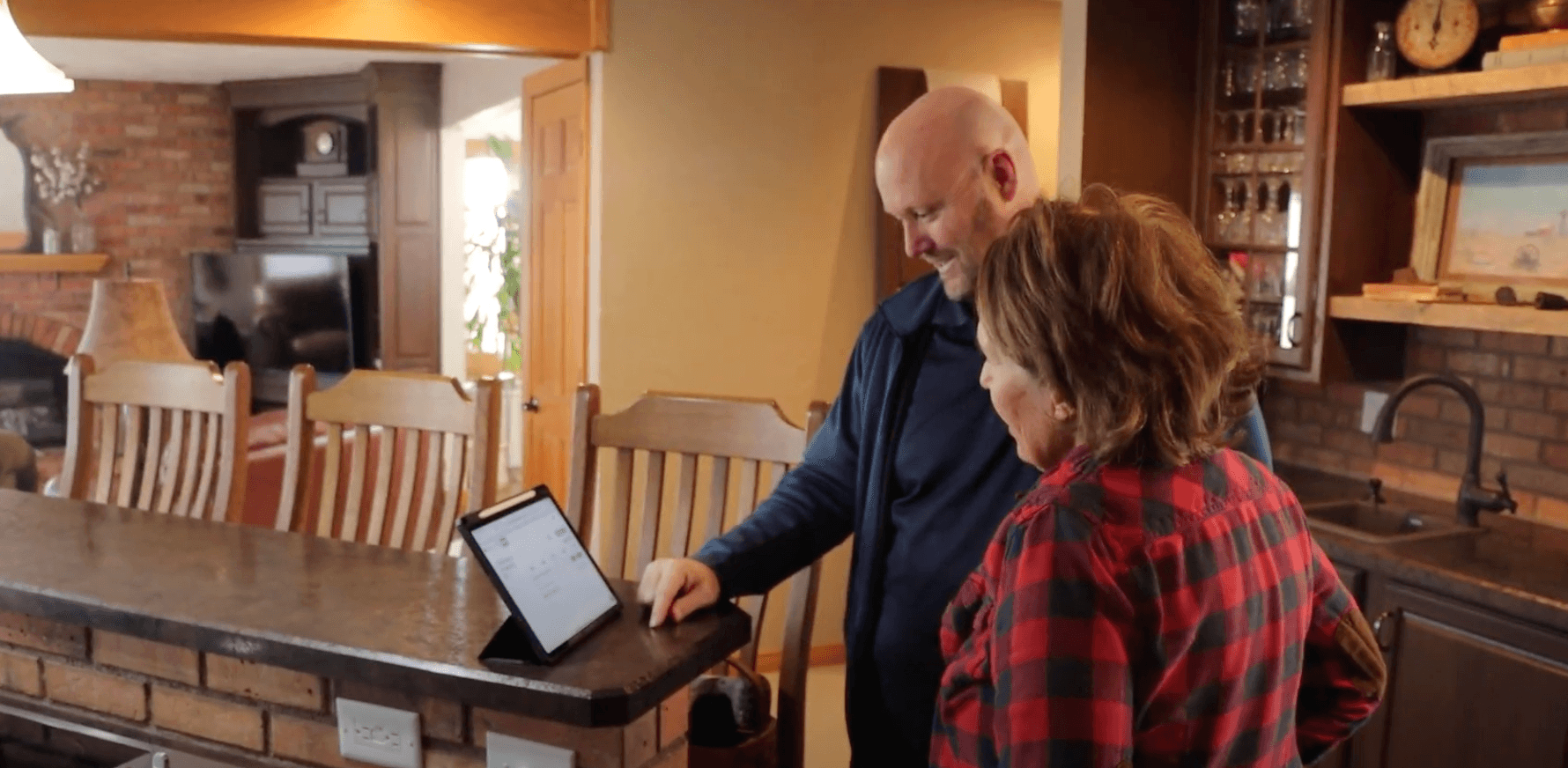Interior Lead-Based Paint: Removal, Costs, & Dangers in Omaha, NE
October 10th, 2024
8 min read
If you recently moved into a home with lead-based interior paint or just discovered your house has it, you may feel overwhelmed. This worry is justified, as lead paint can pose serious health risks to you and your family. Many homeowners find themselves overwhelmed when faced with this issue, unsure of how to proceed or who to turn to for help.
At Brush & Roll Painting, we've been assisting Omaha homeowners with their residential painting needs for over two decades. Our painting business is EPA-certified and has extensive experience identifying and safely addressing lead paint issues in homes throughout the area.
In this article, we'll cover the risks, and costs, explain your options, and help you make informed decisions to protect your family and your property investment. By the end, you'll understand the risks associated with lead paint, know how to identify its presence and have a clear understanding of the steps needed to address it safely.
Interior Lead Paint in Omaha Homes
Lead paint was widely used in residential homes and buildings in Omaha, NE until 1978 when the federal government banned its use in housing. If your Omaha home was built before 1978, lead paint is likely present somewhere in the structure. This is particularly true for homes in older neighborhoods like Dundee, Benson, or Aksarben, where many houses date back to the early 20th century.
Painters and homeowners alike need to be aware of this history. For painters, it changes their approach to every job in an older home. For homeowners, it can help you properly maintain and protect your home.
Most importantly, it can help keep you and your family safe and in a healthy, livable environment.
It's crucial to note that even if the interior of your home has been repainted in recent years, lead paint can still be a significant concern. This is because simply painting over lead paint doesn't eliminate the hazard; it merely conceals it temporarily. Over time, the new paint may chip or wear away, potentially exposing the underlying lead paint. Moreover, lead paint may still be present on surfaces that aren't immediately visible, such as:
- Underneath existing paint layers
- On the exterior of the home
- In less frequently painted areas like closets, basements, or attics
- On original woodwork or trim
Additionally, the process of repainting, if not done properly by professionals aware of lead paint risks, could have disturbed existing lead paint and spread lead dust throughout the home. This is why we emphasize the importance of proper testing and remediation, even in homes that appear to have been updated.
Professional painters are trained to recognize these signs and can often spot potential lead paint issues that homeowners might miss. This is why it's crucial to have a professional assessment if you suspect lead paint in your home, regardless of its apparent condition or recent painting history.
When Interior Lead-Based Paint Becomes a Critical Issue
While lead paint in a home is always a concern, certain conditions elevate the risk level and require immediate attention. Understanding these thresholds is crucial for homeowners to prioritize lead paint remediation efforts:
- The 20% Rule: According to EPA guidelines, if more than 20% of the paint on any surface is peeling, chipping, or otherwise deteriorating, it's considered a significant lead hazard. This 20% threshold applies to both interior and exterior surfaces. For example, if a wall in your living room has more than 20% of its paint peeling or damaged in any way, it should be addressed urgently.
- Renovation and Remodeling: Any renovation or remodeling activity that disturbs painted surfaces in a pre-1978 home can create significant lead hazards if not handled properly. This is true regardless of the current condition of the paint.
- Visible Paint Chips: If you can see paint chips or dust in the home or around the exterior, this is a clear sign of an active lead hazard that needs immediate attention.
It's important to note that while these guidelines provide a general framework, the safest approach is to have any suspected lead paint evaluated by a professional.
Remember, even if your home's lead paint doesn't meet these critical thresholds, it's still advisable to develop a plan for long-term management or removal. Lead paint that's currently intact can become a hazard over time due to normal wear and tear, accidental damage, or future renovation projects.
Health Risks From Interior Lead Paint in Homes
Lead paint poses serious health risks, particularly to children and pregnant women. The Centers for Disease Control and Prevention (CDC) reports that lead exposure can cause:
- In children: Learning difficulties, developmental delays, reduced IQ, behavioral problems, and damage to the brain and nervous system.
- In adults: High blood pressure, kidney damage, cardiovascular issues, reproductive problems, and cognitive decline.
A study published in the New England Journal of Medicine in 2003 found that even low levels of lead exposure can significantly impact a child's cognitive development.
This is why professional painters take lead paint so seriously. The process of removing or disturbing lead paint can create dangerous lead dust, which is why only trained and certified professionals should handle these situations.
How to Know if You Have Lead Paint Inside Your Home
Potential indicators of lead paint in your home include:
- Age of the property: Homes built before 1978 are more likely to contain lead paint.
- Paint condition: Deteriorating paint (peeling, chipping, or chalking) in older homes is a warning sign.
- High-friction areas: Door frames, window sills, and stairs often show wear first and may expose underlying lead paint.
- Paint texture: Lead paint can sometimes create a distinct rippled or orange-peel texture.
Professional painters are trained to recognize these signs and can often spot potential lead paint issues that homeowners might miss. This is why it's crucial to have a professional assessment if you suspect lead paint in your home.
How To Test For Interior Lead Paint
The Environmental Protection Agency (EPA) recommends professional testing for the most reliable results.
- EPA-certified professional painting companies, including Brush & Roll Painting in Omaha, NE, can perform these tests. These certified renovators use EPA-recognized test kits.
- You can also hire a risk assessor, certified lead-based paint inspector, or certified renovator. These professionals may use an X-ray fluorescence instrument or will sample a paint chip. For help finding a certified risk assessor or inspector, call the National Lead Information Center at 1-800-424-LEAD (5323).
DIY testing kits are available to purchase, but the EPA highly recommends you exercise caution while using these, as the effects can be harmful.
How To Remove Lead-Based Interior Paint
There are two primary methods for addressing lead paint:
- Removal: This method involves completely stripping away the lead paint. It's the most thorough option but also the most expensive and time-consuming. This process should only be undertaken by certified professionals due to the high risk of lead dust generation.
- Replacement: In some cases, it may be more cost-effective to replace the painted surface entirely, such as removing old windows or doors. While this might involve carpenters or other contractors, painters often play a crucial role in finishing these new surfaces safely.
The best method depends on the specific circumstances of your home and the condition of the lead paint. Professional painters or contractors can assess the situation and recommend the most appropriate approach.

The Importance of EPA-Certified Painters
The EPA requires contractors working on homes built before 1978 to be certified in lead-safe practices. These certified professionals, including painters, are trained to:
- Properly contain the work area to prevent lead dust spread
- Use specialized equipment and techniques to minimize lead dust generation
- Conduct thorough clean-up to ensure the area is safe after work completion
EPA certification is crucial because improper handling of lead paint can create more hazards than it solves.
The Risks of Painting Over Lead Paint
While many painters are EPA-certified, others may offer to just paint over your lead paint. While painting over lead paint might seem like a quick solution, it's not recommended for several reasons:
- It's a temporary fix: New paint will eventually wear off, potentially exposing the underlying lead paint.
- It doesn't eliminate the risk: Any future renovations or damage to the new paint layer could disturb the lead paint underneath.
- Legal considerations: Depending on the condition of the lead paint and local regulations, covering it up might not meet legal requirements for lead paint remediation.
Professional painters understand these risks and can advise homeowners on the most appropriate course of action. In many cases, simply painting over lead paint can create a false sense of security while leaving the underlying hazard intact.
The Cost of Interior Lead Paint Removal in Omaha
The cost of lead paint remediation can vary significantly based on the size of your home, the extent of lead paint present, and the chosen removal method.
- Lead paint removal costs range from $8 to $15 per square foot.
- For a typical home, full lead paint removal can cost between $10,000 to $30,000.
While these costs may seem high, it's important to understand why professional lead paint remediation is so expensive:
- Specialized Training and Certification: EPA-certified painters undergo extensive training to handle lead paint safely. This certification process is costly and needs to be renewed regularly, which factors into the overall cost of their services.
- Specialized Equipment: Professional lead paint removal requires specialized tools and equipment, including:
- HEPA vacuums for dust containment
- Protective gear (respirators, disposable clothing)
- Specialized containment systems to prevent lead dust spread
- Professional-grade testing equipment
- Labor-Intensive Process: Lead paint removal is a time-consuming process that can't be rushed without compromising safety. It often involves:
- Setting up containment areas
- Careful removal of paint layers
- Thorough cleaning and decontamination of the work area
- Multiple rounds of testing to ensure all lead has been removed
- Disposal Costs: Lead paint chips and dust are considered hazardous waste and must be disposed of according to EPA regulations. This often involves additional costs for proper containment and disposal.
- Insurance: Companies dealing with lead paint remediation need specialized insurance coverage due to the associated health risks, which adds to their operational costs.
- Post-Removal Testing: After the removal process, additional testing is required to ensure the area is safe, which adds to the overall cost.
- Liability: The high risks associated with improper lead paint handling mean that professional painters take on significant liability, which is reflected in their pricing.
- Compliance with Regulations: Adhering to all EPA and local regulations for lead paint removal requires additional time and resources, contributing to higher costs.
It's crucial to remember that while the cost of professional lead paint remediation is significant, it's an investment in your family's health and your property's value. Attempting to cut costs by hiring uncertified contractors or attempting DIY removal can lead to incomplete removal, spread of lead dust, and potential health hazards – all of which could end up being far more costly in the long run.
Additionally, some local and state governments offer grants or low-interest loans for lead paint remediation, especially for low-income households or homes with children. It's worth checking with your local housing authority or health department to see if such programs are available for you.
While professional painters can often provide detailed estimates for lead paint remediation, it's important to note that unexpected issues may arise during the removal process, potentially affecting the final cost. A reputable painting company will keep you informed throughout the process and discuss any necessary changes to the scope of work.
Ultimately, while the cost of professional lead paint remediation is expensive, it's important to weigh this against the potential health costs and liability of living with or improperly removing lead paint. Professional remediation provides peace of mind and long-term protection for you and your family.
The Dangers of DIY Lead Paint Removal
Attempting to remove lead paint without proper training and equipment is highly dangerous. The EPA strongly advises against DIY lead paint removal due to:
- Health risks: Improper removal can create lead dust, increasing exposure risk.
- Ineffectiveness: DIY methods often fail to fully address the problem.
- Legal issues: Improper removal may violate local and federal regulations.
This is why it's crucial to work with certified professional painters who have the training and equipment to handle lead paint safely. They can ensure that the remediation is done effectively and in compliance with all relevant regulations.
Steps for Omaha Homeowners Dealing with Lead Paint
If you suspect lead paint in your home, follow these steps:
- Have your home professionally tested, especially if it was built before 1978.
- If lead paint is found, have a certified professional assess its condition and location.
- Based on the assessment, decide on the appropriate remediation method.
- Hire EPA-certified contractors.
- Prepare to not use the spaces getting repainted until it is complete
- After work completion, have your home retested to ensure it's lead-free.
Professional painters can guide you through this process, often serving as a single point of contact for all your lead paint remediation needs.
Legal Responsibilities for Homeowners with Interior Lead Paint
Homeowners, especially landlords or those selling properties built before 1978, have legal obligations regarding lead paint:
- Disclosure: You must inform tenants or potential buyers about known lead paint hazards.
- Information provision: You're required to provide an EPA-approved informational pamphlet on lead paint hazards.
- Record keeping: Maintain records of all lead paint disclosures and reports.
Failure to meet these requirements can result in significant fines.
Removing Interior Lead Paint in Your Home
Understanding the risks and responsibilities associated with lead paint is crucial if you have an older property. By being informed about testing methods, removal options, and legal requirements, you can take the necessary steps to ensure a safe living environment for your family.
Remember, while the presence of lead paint can be concerning, it's a manageable issue with the right approach and professional assistance. Proper lead paint removal will protect your family's health and increase your property's value.
At Brush & Roll Painting, we're EPA-certified residential painters. We help homeowners in Omaha, NE with their lead-based paint inside and out. This ensures your home remains a safe and beautiful space for your family.
If you're ready to address potential lead paint issues in your Omaha home, click the button below to get a quote. Let's work together to create a safer, healthier living environment for you and your family.
When choosing a painter to tackle your lead-based paint, you want to be 100% sure you’re making the right decision for you. To help prepare yourself for the process of hiring a painter for your lead removal project, download your ultimate guide to hiring a painter by clicking the button below.
Kaylea is the Brush & Roll Painting Content Manager. Kaylea is a Journalism and Media Communications summa cum laude graduate with a minor in Marketing from the University of Nebraska at Omaha. Kaylea manages the marketing for Brush & Roll Painting.
















-Jul-23-2025-02-21-33-5468-PM.png?width=800&height=418&name=Blog%20Post%20Image%20Size%20(2)-Jul-23-2025-02-21-33-5468-PM.png)




-Oct-22-2025-01-39-19-5208-PM.png?width=800&height=418&name=Blog%20Post%20Image%20Size%20(1)-Oct-22-2025-01-39-19-5208-PM.png)





